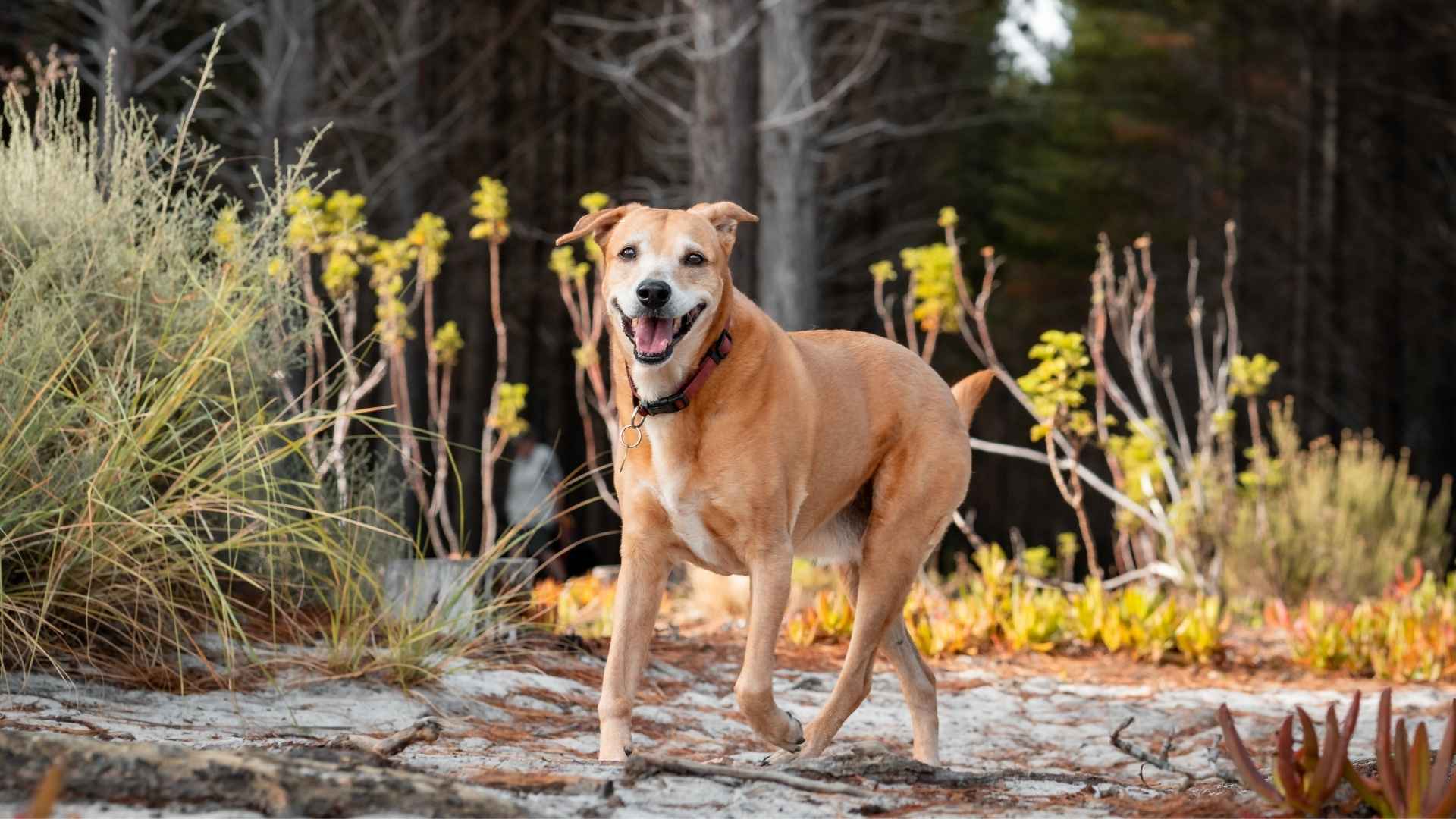Some dogs are natural-born escape artists always looking for a way to dash through the door, leap over fences, or dig their way to freedom. These breeds have an adventurous spirit, a strong prey drive, or an insatiable curiosity that makes them eager to explore beyond their home. While their intelligence and energy make them wonderful companions, their Houdini-like skills can challenge the owners.
If your furry friend constantly outsmarts gates, scales backyard fences, or finds the tiniest gaps to squeeze through, you’re not alone! Understanding why certain dogs have this instinct and how to manage their behavior is key to keeping them safe.
From secure fencing to mental stimulation, there are plenty of ways to prevent these escape attempts while keeping your pup happy. Let’s dive into what makes these dogs so determined to run—and how you can outsmart their clever escapes!
High Escape Tendency Dog Breeds
1. Siberian Husky

Siberian Huskies are among the most notorious escape artists in the canine world. Bred to pull sleds across vast, icy landscapes, they have incredible endurance, strength, and a deep-rooted desire to run. Their independent nature and curiosity often drive them to explore beyond their boundaries, making containment challenging for their owners.

Britannica states Husky’s intelligence plays a big role in their escape tendencies. They are problem solvers who can figure out how to open doors, unlatch gates, and dig under fences.
They will find a way to break free if left alone for too long or not given enough exercise. Their ability to assess weak points in enclosures makes them one of the most challenging breeds to confine.
Huskies are also exceptional jumpers and climbers. They can easily scale high fences, especially if they get a running start. Standard fencing often fails to contain them, as they use their strong back legs to propel themselves over barriers. Owners need tall, secure, and reinforced fences to prevent their Husky from making an unexpected escape.
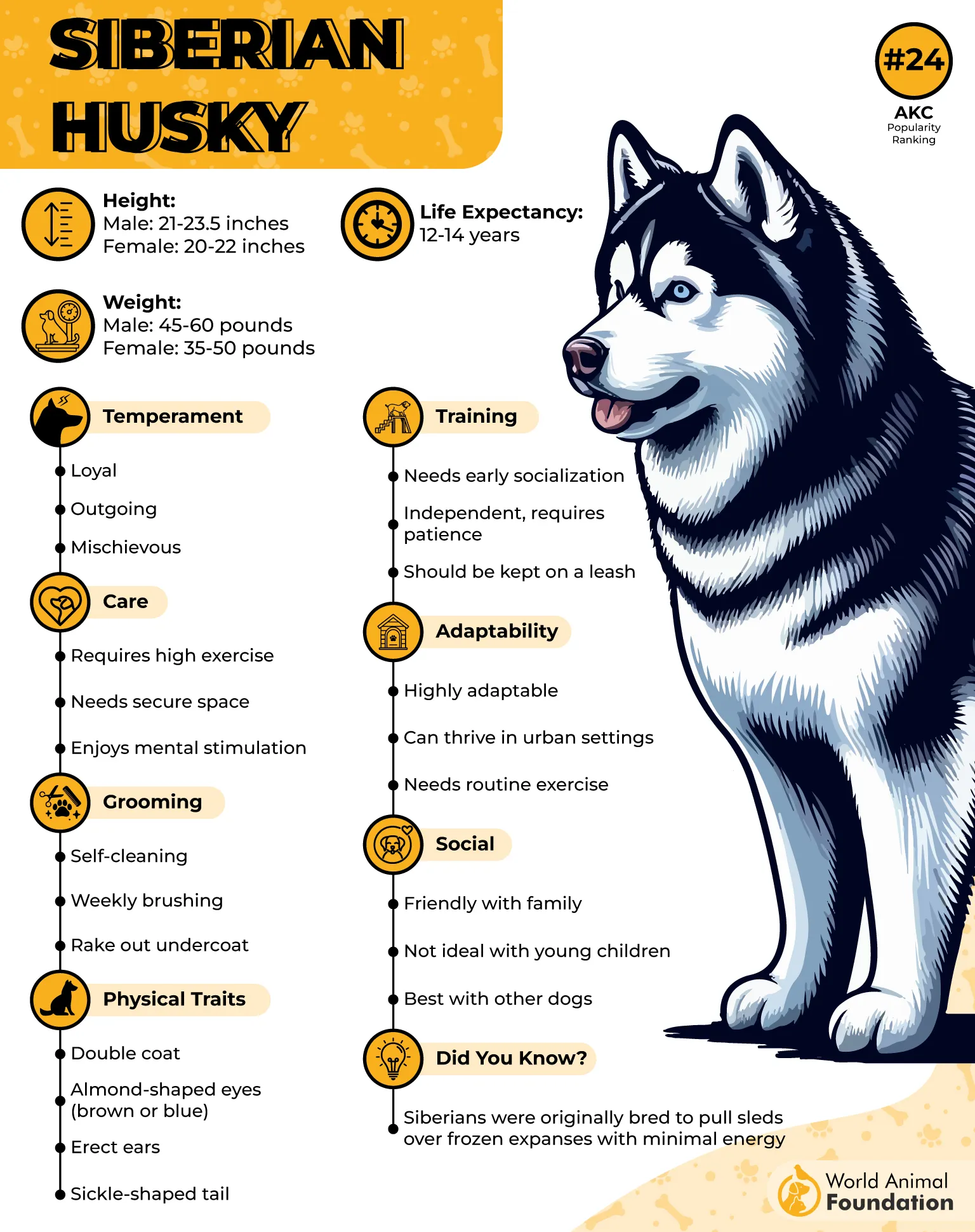
Their social nature adds another layer to their escape tendencies. Huskies thrive on companionship and can become anxious or restless when left alone. Separation anxiety can push them to seek out people, dogs, or open spaces. This breed requires constant engagement through exercise, mental stimulation, or interaction with other pets and family members.
Owners must stay one step ahead to keep a Siberian Husky from escaping. Secure fencing with a buried base, escape-proof latches, and plenty of daily exercise can help curb their urge to roam.
Providing engaging toys, training sessions, and a structured routine can also satisfy them mentally. Without proper precautions, a Husky will always find a way to run toward adventure.
2. Border Collie

Border Collies are highly intelligent and energetic dogs, making them one of the most escape-prone breeds. Originally bred for herding livestock, they have an instinct to chase, control, and explore their surroundings. Their strong work ethic and endless curiosity often lead them to seek new challenges, including finding ways to escape fenced yards or enclosed spaces.
One of the biggest reasons Border Collies escape is their sharp mind. They can quickly learn how to open doors, lift latches, or push through weak spots in fences. If left unstimulated, their problem-solving nature turns into a mission to break free. A bored Border Collie will use its intelligence to outthink its owners and find an escape route.
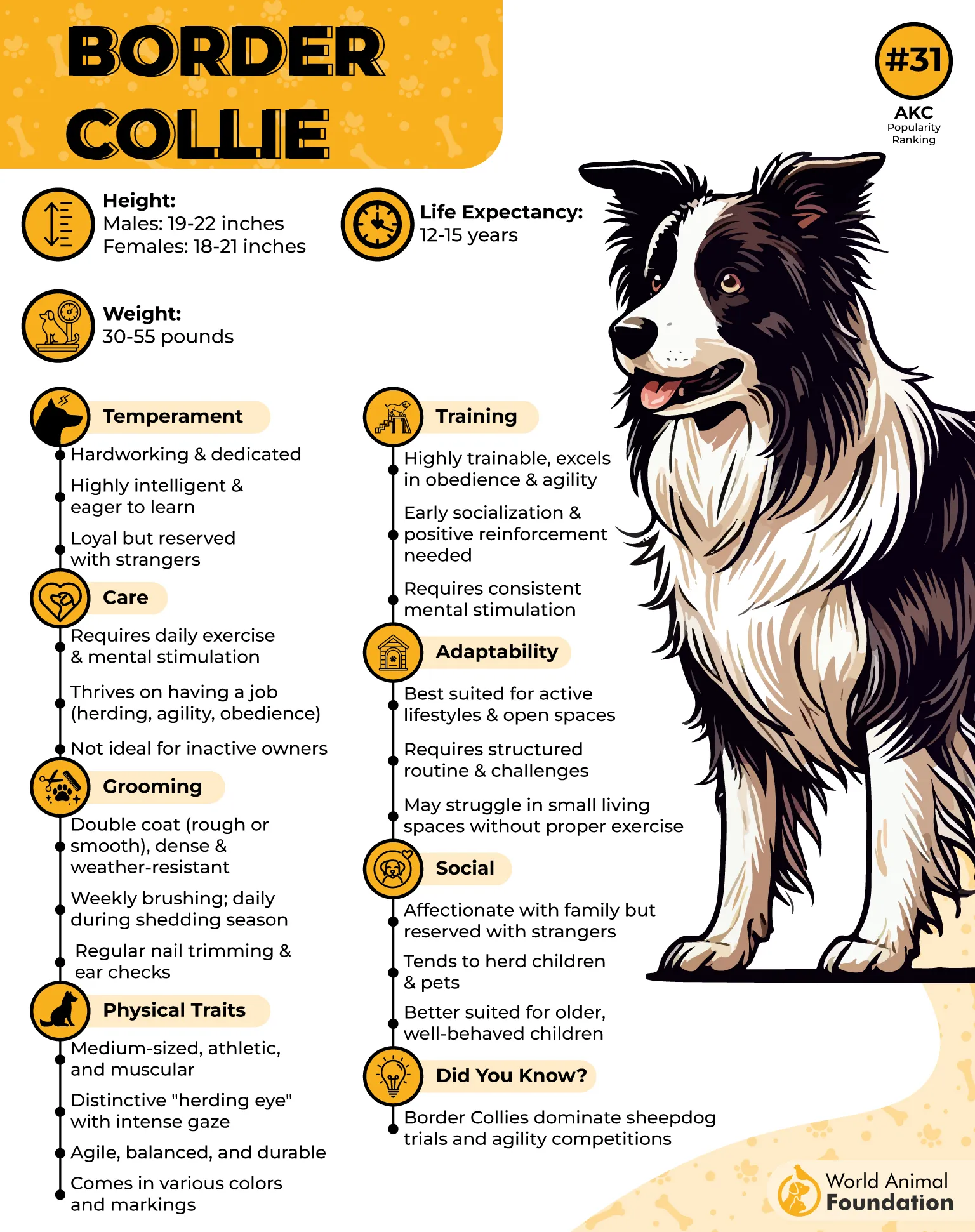
Petplan states that Collies’ high energy also contributes to their escape tendencies. Border Collies require intense daily exercise and mental engagement. Without enough activity, they become restless and will look for an outlet, often by running off in search of excitement. Even a well-trained dog may try to escape if they feel confined for too long.
In addition to their intelligence, Border Collies are skilled jumpers and climbers. They can easily clear standard fences or use objects around them as stepping stones to climb higher. Some are also known to dig under fences, making it essential for owners to reinforce all potential exit points.
Owners must provide plenty of physical and mental stimulation. Daily training, interactive games, and herding exercises can keep a Border Collie engaged. Secure fencing with a dig-proof base and locked gates is a must. With the right environment, these brilliant dogs can thrive without constantly looking for ways to escape.
3. Australian Shepherd

Australian Shepherds are intelligent, high-energy dogs with a strong instinct to run and explore. Bred for herding, they are always looking for a job to do. If pet parents don’t provide enough mental and physical exercise, these dogs may create challenges, including finding ways to escape. Their love for adventure and sharp minds make them one of the most determined escape artists.
Trouble often starts when an Aussie doesn’t get enough stimulation. A bored Australian Shepherd will look for excitement, whether chasing a squirrel, digging under a fence, or jumping over barriers. Their herding instincts make them highly alert; any moving object can trigger their urge to run. Without proper outlets for their energy, they may attempt to escape just for the thrill of it.

These dogs are also highly athletic. They can easily leap over standard fences, especially if they see something interesting beyond their yard. Their strong legs allow them to jump high, while their intelligence helps them figure out how to push open gates or squeeze through small gaps. Keeping them safely inside a house or backyard requires extra precautions.
Pet parents must be proactive in preventing escapes. A secure yard with high fencing, locked gates, and a dig-proof base is essential. Regular mental and physical exercise, such as agility training, herding games, and puzzle toys, can help keep an Aussie engaged. A tired dog is less likely to get into trouble.

Australian Shepherds can be happy and healthy at home with the right balance of activity and security. Keeping their minds and bodies active will reduce their desire to escape, ensuring they stay safe while enjoying their energetic lifestyle.
4. Jack Russell Terrier

Jack Russell Terriers may be small, but they have a huge personality and an even bigger urge to wander. Originally bred for hunting, these energetic dogs always look for something to chase. Their strong prey drive means that even the sight of a bird fluttering nearby can send them sprinting off without a second thought.
PetMD states that their hunting instincts make them natural escape artists. Jack Russells are known for their determination and willpower, so they don’t give up easily. If they spot something interesting beyond a fence, they dig, squeeze, or climb out to catch it. Their agility and problem-solving skills make even well-secured yards challenging to contain.
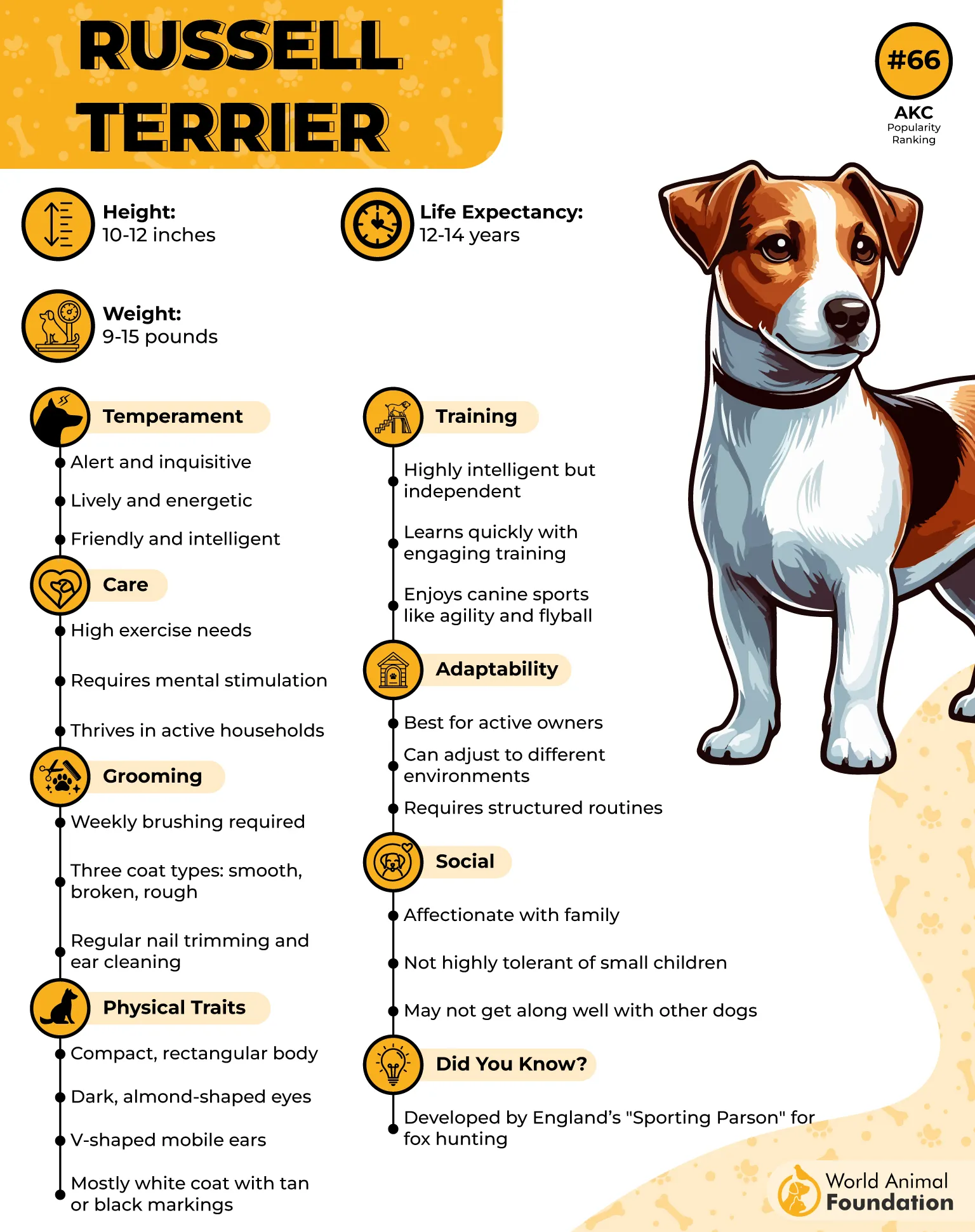
Wandering isn’t just a habit—it’s an instinct. A Jack Russell Terrier loves exploring new scents, sights, and sounds, often leading them far from home. Their small size allows them to slip through gaps in fences that larger dogs wouldn’t even notice. Owners often underestimate how easily these little adventurers can escape.
Preventing a Jack Russell from escaping requires proper fencing with no gaps and plenty of physical and mental stimulation. Activities like fetch, obstacle courses, and interactive hunting games can help satisfy their need to chase and catch prey. Keeping them engaged reduces their urge to wander off in search of excitement.
With the right environment and training, these bold and energetic dogs can stay happy and safe at home. Jack Russell Terriers may always have a strong instinct to hunt and explore, but they can enjoy an adventurous life without escaping at every opportunity with proper care.
5. Vizsla

Vizslas are intelligent hunting dogs with escape artist tendencies, making them challenging to contain. Their boundless energy and strong prey drive push them to explore beyond their home, especially when they catch an interesting smell. Unlike scent hounds that follow trails steadily, Vizslas move quickly and are difficult to stop once they take off.
Their slim bodies allow them to slip through tight spaces and small openings that other dogs might not fit through. If a fence has a weak point, they will find it. Certain breeds are known for their determination, and Vizslas are no exception. Their stubborn nature means they won’t give up easily once they set their mind on escaping.
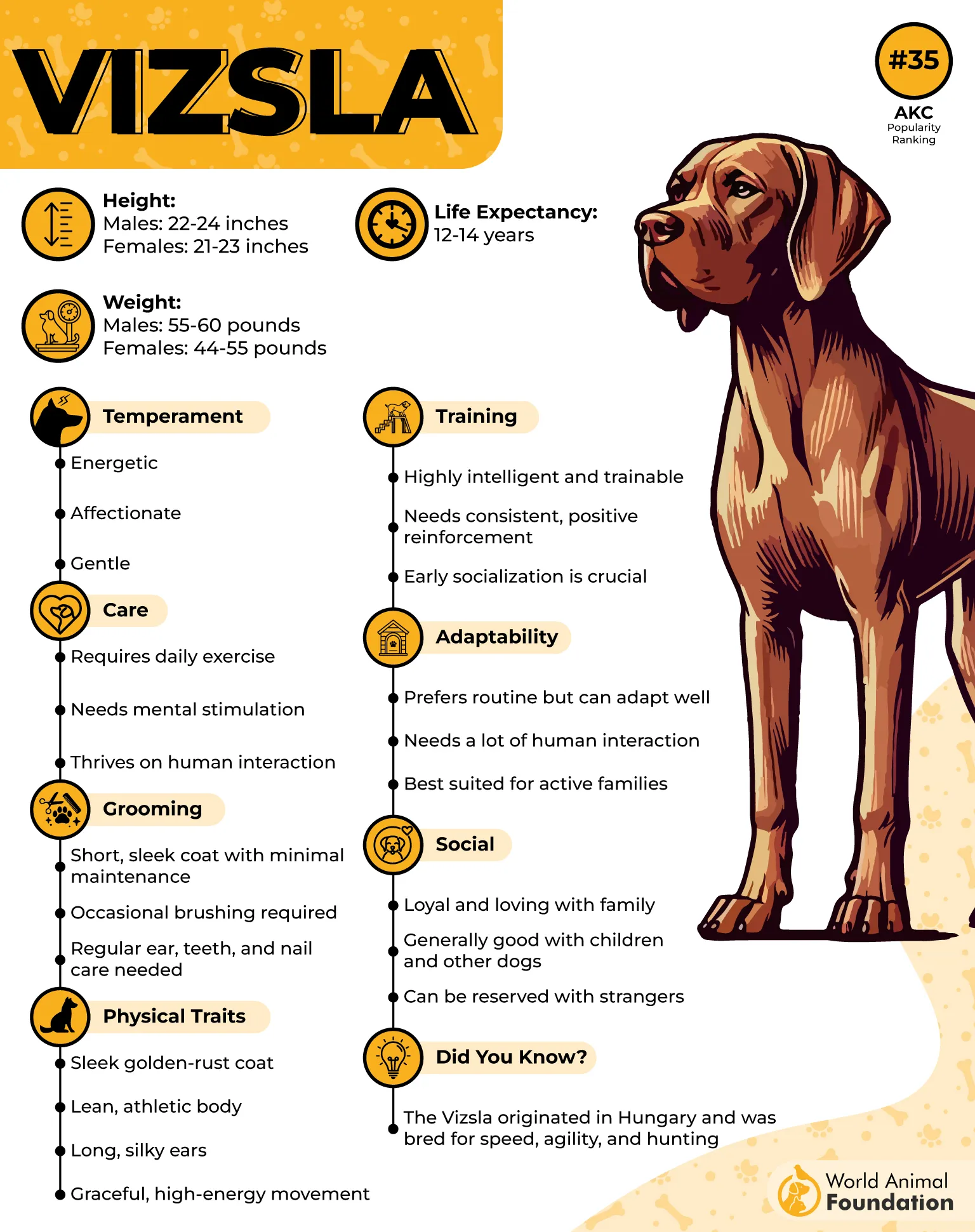
Boredom is another major factor in their escape attempts. Vizslas get bored easily and require constant mental and physical engagement. Without enough exercise or stimulation, they may try to break free just to find something interesting to do. Even a secure yard won’t stop them if they lack proper enrichment.
A leash is essential when walking a Vizsla, as their instincts can take over instantly. If they catch an interesting smell, they may ignore commands and pull away, making them difficult to control. Regular training and reinforced recall commands are necessary to keep them safe outdoors.
Owners should provide a well-secured environment, plenty of exercise, and human interaction. Vizslas thrive when they are mentally engaged and physically active. With the right approach, these smart and energetic dogs can enjoy their freedom without constantly trying to escape.
6. Weimaraner
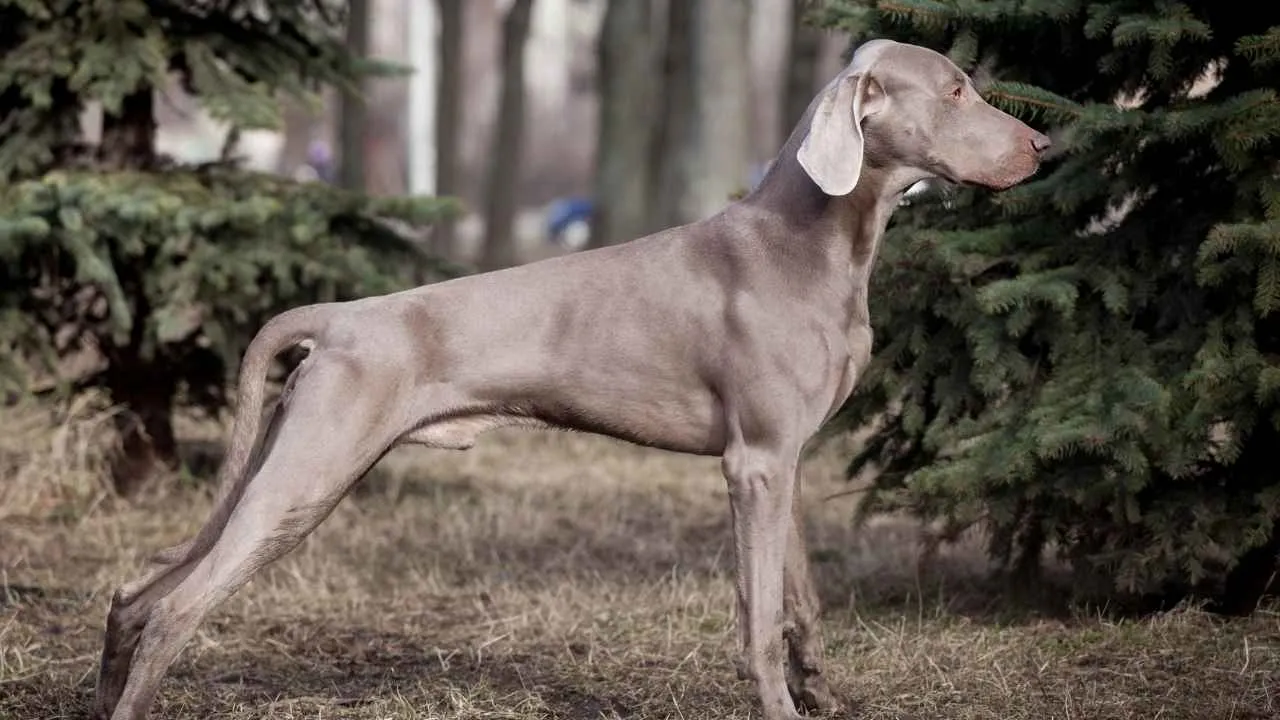
Weimaraners are intelligent, athletic dogs with a strong instinct to roam. Known as skilled escape artists, they tend to find ways out of fenced yards or enclosed spaces if they aren’t properly stimulated. Their high energy levels and curiosity make them prone to wandering, especially if they spot something interesting in the distance.
A Weimaraner’s high prey drive is one of the main reasons they try to escape. They are naturally drawn to chasing small animals, including cats, and won’t hesitate to run after anything that moves. This instinct can make containment challenging, as they may jump over or dig under fences to reach their target.

Without regular exercise and mental engagement, Weimaraners can become restless and anxious. To satisfy them, they require plenty of physical stimulation, including running, agility training, and interactive play. If they don’t get enough activity, they may look for ways to escape to burn off energy.
Their intelligence also plays a role in their escape tendencies. Weimaraners can quickly learn to open doors, push through weak fences, or find gaps in enclosures. Their problem-solving skills make them one of the most determined breeds for escaping.
To prevent a Weimaraner from running off, provide a secure, reinforced yard and plenty of daily exercise. Keeping their minds and bodies engaged will reduce their urge to escape while ensuring they stay happy and well-behaved.
7. German Shepherd

German Shepherds are highly intelligent and powerful dogs, making them natural problem solvers when escaping. Their strong build and agility allow them to easily climb fences, especially if they see something worth chasing. If not properly contained, they can find creative ways to break free and explore.
These dogs are known for their ability to squeeze through small openings. A loose gate, a gap under a fence, or even an unlocked door can invite a German Shepherd to escape. Their intelligence and determination make them quick learners, and if they find an exit once, they are likely to try again.
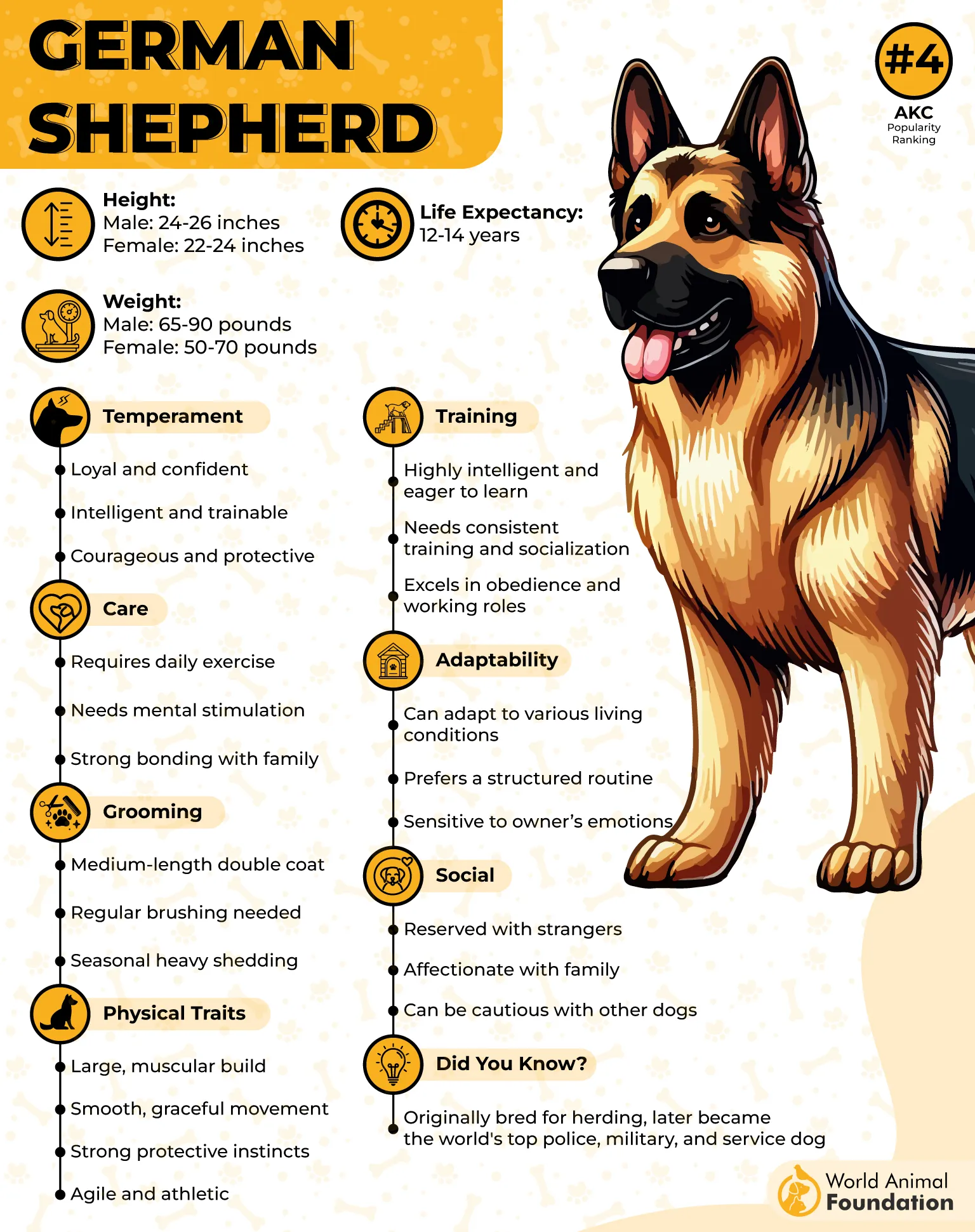
Because of their high energy levels, they need plenty of mental and physical stimulation. Without enough exercise, they may attempt to escape out of boredom or frustration. Regular training, long walks, and interactive games help keep them engaged and reduce the urge to roam.
Their protective instincts can also drive them to escape. If they sense a threat or need to patrol beyond their home, they may attempt to climb fences or push through weak barriers. A strong, reinforced yard is necessary to keep them secure.
For owners dealing with a frequent escapee, using a GPS tracker on their collar can provide peace of mind. This ensures that if a German Shepherd does break free, they can be quickly located and brought home safely. With the right training and secure environment, these intelligent dogs can be kept happy and contained.
Conclusion
Understanding the escaping tendency of dog breeds is crucial for pet owners who want to provide a secure and suitable environment for their furry companions. Whether it’s the intelligent yet independent Shiba Inu, the energetic Belgian Malinois, or the agile Afghan Hound, these breeds require constant supervision, proper training, and ample exercise to prevent escape attempts.
Even friendly breeds like the Labrador Retriever or strong-willed dogs like the Pit Bull can display escapist behaviors if they feel confined, especially in small spaces. By meeting their physical and mental needs, owners can ensure a happy, safe, and well-adjusted pet that thrives within their home.


